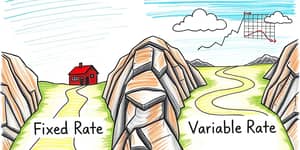
In today’s uncertain environment, savers need strategies that deliver reliable returns without locking up all their capital. A CD ladder can provide predictable, fixed interest rate returns along with staggered access to funds, creating a blend of safety and opportunity.
By following a disciplined laddering method, you can systematically reinvest at favorable rates, reduce interest-rate risk, and maintain periodic liquidity. This comprehensive guide explores every aspect of CD ladders, from basic definitions to advanced execution tips.
A CD ladder involves purchasing multiple certificates of deposit with different maturity dates, rather than depositing your entire balance into a single CD. This structure enables you to balance the benefits of long-term yields while keeping portions of your savings accessible.
Each “rung” on the ladder represents a CD with a specific term. As each rung matures, you decide whether to withdraw or roll over the funds into a new long-term CD, preserving the ladder’s cadence.
For example, splitting $12,000 into three CDs—13-month at 3.80%, 23-month at 4.32%, and 33-month at 4.84%—could net roughly $1,057.89 in interest over the full terms. This step-by-step guidance ensures clarity for savers who want tangible results.
Building an effective ladder requires intentional planning. Start by determining the total amount you wish to invest and then divide your investment into equal or variable parts based on your cash flow needs and risk tolerance.
In practice, a $20,000 ladder split into four $5,000 CDs with maturities at 1, 2, 3, and 4 years ensures that every year you have one CD ready to roll. If market rates have risen, you capture those gains immediately; if rates fall, you still benefit from the locked-in rate of the longer CDs.
Laddering provides a dual advantage. First, you earn the higher yields typically offered on longer-term CDs. Second, you protect your portfolio against rate shifts by having portion of the ladder matures at set intervals. This dynamic allows you to reinvest at prevailing rates rather than being locked into a single rate across all funds.
Over time, as shorter rungs mature, you continuously reinvest into high-yield CDs, compounding growth. In rising rate environments, this structure means you steadily upgrade to more attractive yields without sacrificing overall stability.
To decide if a CD ladder suits your finances, weigh its benefits against potential drawbacks.
You can tailor a ladder to match your timeline, risk tolerance, or upcoming cash needs. Some savers prefer short-term ladders (6 months to 2 years) for near-term goals, while others opt for extended ladders reaching 5 years or beyond to maximize yields.
Experimenting with these stepped CD investing methodologies can optimize both returns and accessibility, ensuring your cash is available when needed.
Market conditions and Federal Reserve policy drive CD rates. As of recent updates, you might find 13-month CDs at 3.80% APY, 23-month CDs at 4.32% APY, and 33-month CDs at 4.84% APY.
Interest is typically compounded monthly or quarterly, and the APY reflects that compounding. To project ladder performance accurately, use online CD calculators, which allow you to compare different structures and compounding frequencies.
Maintaining a CD ladder can be straightforward if you implement strong organizational habits. Begin by opening CDs at banks or credit unions that offer competitive rates and clear disclosures.
Automation features like email alerts or calendar reminders ensure you can reinvest proceeds into the longest-term available without missing optimal windows.
Interest earned on CDs is generally taxed as ordinary income in the year it is credited. High-income individuals can consider placing CDs in IRAs or other tax-deferred vehicles to reduce annual tax liabilities.
Remember that FDIC or NCUA coverage applies per depositor per institution. If your total CD holdings exceed insurance limits, diversify across banks or include joint ownership arrangements to maintain protection.
During periods of market volatility and unpredictable economic shifts, capital preservation and steady income take priority. CD ladders shine in these conditions, delivering a strategic blend of safety, liquidity, and yield.
By carefully constructing your ladder, monitoring rates, and reinvesting wisely, you can build a resilient savings vehicle. A well-maintained ladder not only captures rising rates automatically, ensuring that your savings keep pace with evolving economic realities.
Whether you seek to fund a future purchase, bolster retirement reserves, or simply maximize the efficiency of your emergency fund, a CD ladder can be an indispensable tool in your financial toolkit. Begin planning your ladder today and unlock better returns on your savings with confidence and clarity.
References













